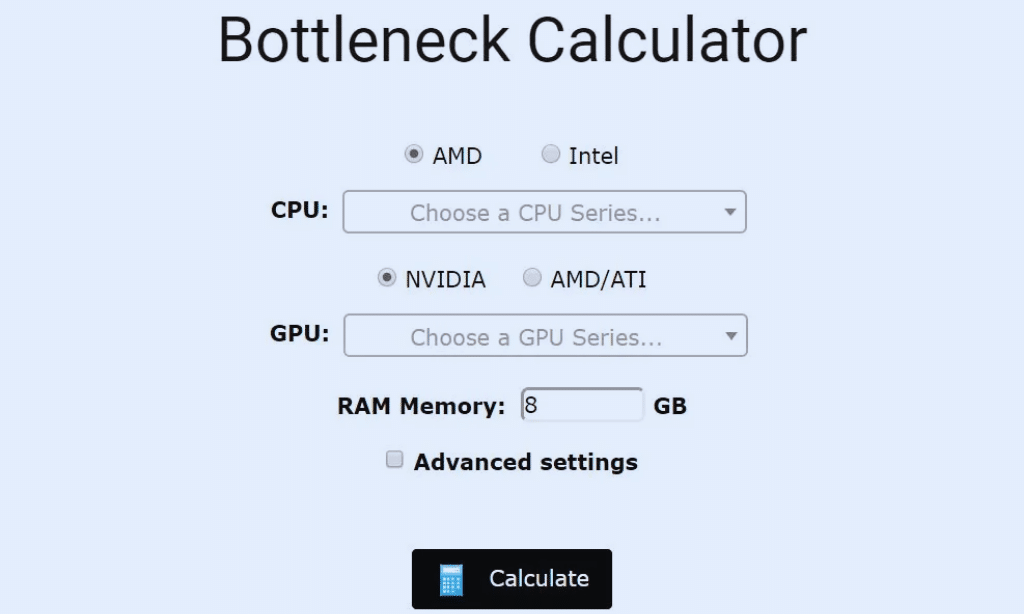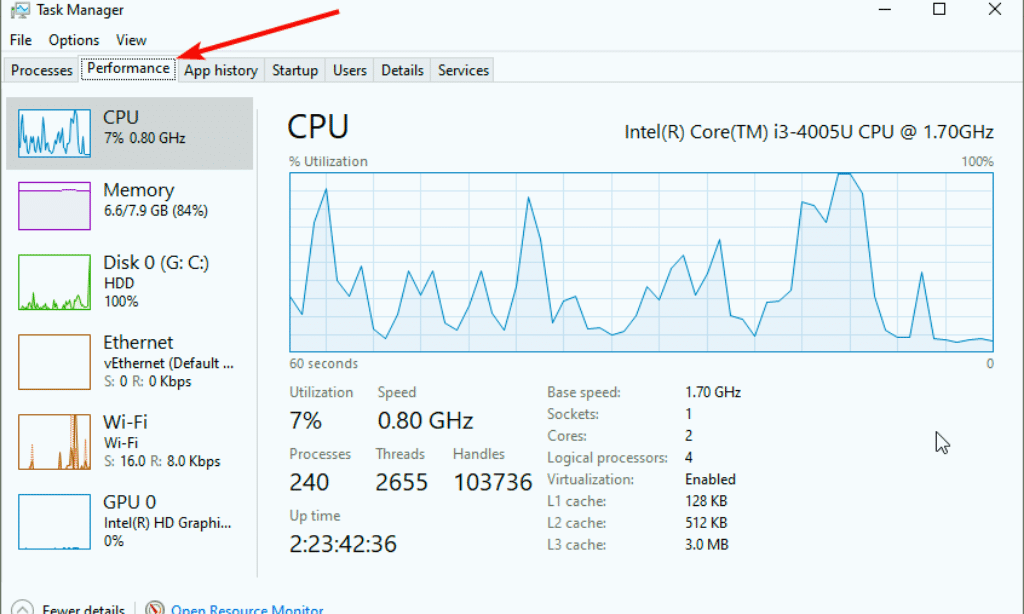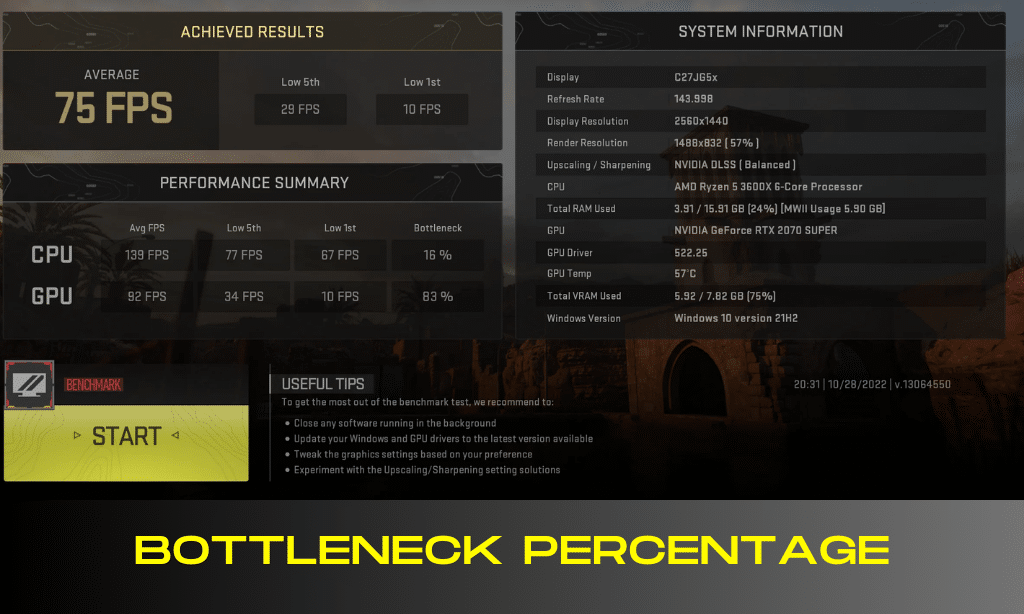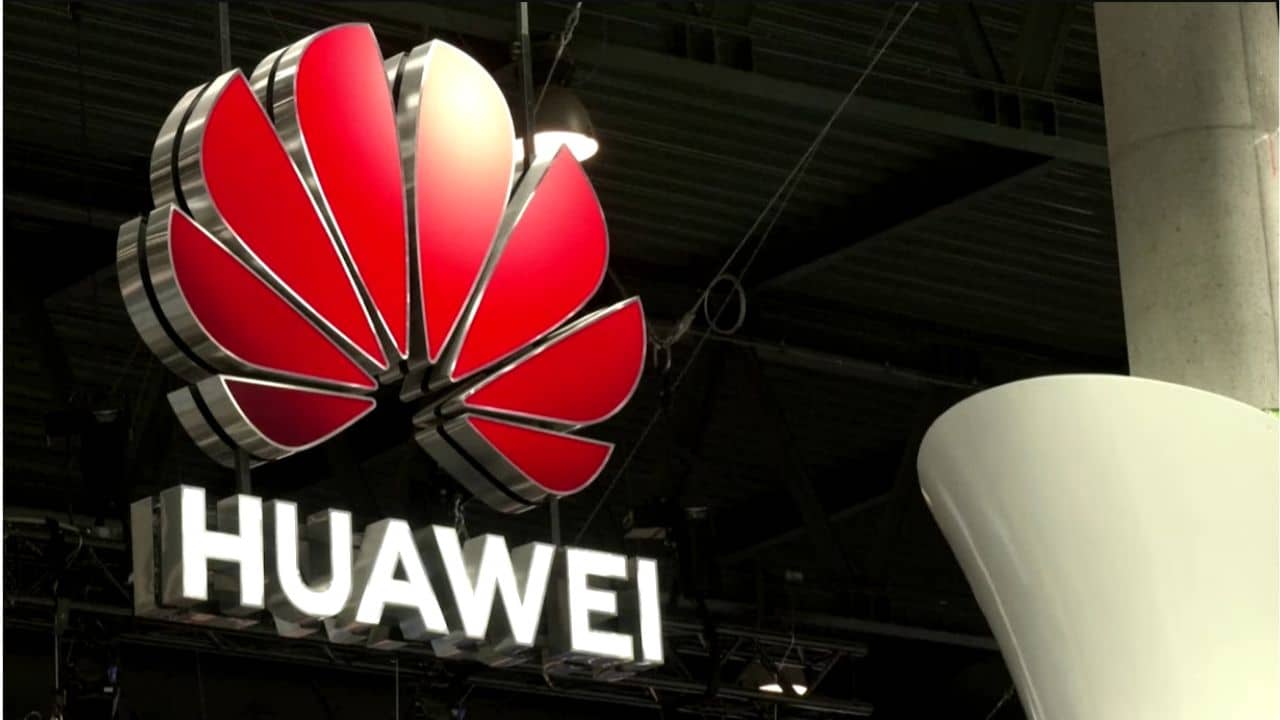Are you looking for the latest updates in the Bottleneck Calculator? If so, this blog post is here to help. A Bottleneck Calculator is a tool used by PC enthusiasts and gamers to identify potential performance limitations in their system’s hardware components.
In this article, we’ll explore the basics of how a bottle calculator works and its latest update in 2024 as well as provide tips on getting the most out of your machine with minimal bottlenecks.
Whether you’re a beginner or an expert at building PCs, learn everything you need to know about Bottleneck Calculators to boost your gaming performance!
- A bottleneck is an area of a computer system with limited performance due to the hardware or software being too slow, leading to decreased overall system performance.
- Identifying and addressing bottlenecks has a significant impact on optimizing PC performance as well as improving gaming experiences.
- Valorant’s Bottleneck Calculator, EDT Calculator by PCMR, and AMD Rig Tuning Tool are top-accurate calculators for monitoring and optimizing your PC’s performance in 2024.
- While Bottleneck Calculators can be helpful, there may be inaccuracies due to overclocking, cooling systems differences, resolution levels, and other unnoticed technical requirements
Understanding Bottleneck and Its Impact on PC Performance

Knowing how bottleneck impacts performance is essential to optimize and tweak your PC’s hardware configurations.
Definition of Bottleneck
A Bottleneck is a term used to describe an area of a computer system that has limited performance compared to the rest due to the hardware or software being too slow or unable to keep up with demands.
This can lead to decreased overall system performance, as fewer resources are available for other components which can cause them to work less efficiently. In computers, CPU and GPU bottlenecks occur when certain components cannot handle the workloads they are given, which restricts how well they perform.
Similarly, RAM can also become a bottleneck if there is not enough available for all processes on the PC which leads it to struggle under increased workloads or multitasking activities such as streaming high-quality video and playing graphics-heavy games concurrently.
How It Affects Computer Performance
A bottleneck is when one component of a PC system significantly limits the performance of its other components, thereby hindering overall computer performance. Bottlenecks can occur due to outdated or underpowered CPUs, GPUs, and RAM modules as well as high-resolution displays.
When these components become mismatched in terms of quality and capacity, they cause delays within the PC’s processing speed resulting in inconvenient slowdowns during tasks such as gaming or streaming video content online. This results in choppy visuals with low frame rates, laggy interaction times while typing/clicking on programs, and an unresponsive cursor pointer.
In addition to noticeable system lags during gaming sessions where graphics-intensive levels are seemingly running sluggish, programs taking longer than usual to load causing bigger wait times between game runs are telltale signs that point towards bottlenecking issues present within a given system.
Importance of Identifying and Addressing Bottleneck Issues
The health and performance of your PC can be greatly affected by the presence of a bottleneck. A bottleneck is when there is an imbalance in the performance capabilities between certain components within a computer.
This results in one component being significantly slower than others, meaning that it cannot keep up with demands, leading to decreased overall performance. Identifying and addressing bottlenecks can have a significant impact on optimizing PC performance as well as improving gaming experiences.
With proper maintenance of all hardware components, users can keep their machine running smoothly and fast with minimal, ensuring that no individual component becomes too overwhelmed or unable to cope with the workloads demanded by software programs or games.
Read Also: Network Monitoring Tools.
How to Use a Bottleneck Calculator
Various types of Bottleneck Calculators are available today, each with its own set of steps to calculate the potential effects that hardware components can have on system performance.
Available Types of Calculators
There are various calculator types available to help users identify and remove bottlenecks in their computer system. The most popular type of calculator used for bottleneck detection is the integrated benchmark, which corresponds with your hardware setup and tests how smoothly different games or applications will run on your PC.
Other calculators such as Time Spy & Superposition also provide a more comprehensive assessment for both GPUs & CPUs. Another good option is GPU-Z software, a lightweight program that can be used to calculate clock speed compatibility, display adapter information, temperature readings, fan speed monitoring etcetera.
For those using an AMD-based graphics card, Ryzen Master provides support by automatically overclocking your CPU or fine-tuning settings based on workloads. Meanwhile, GPUPI helps track performance changes over time by tracking changes across systems configurations which makes it ideal for power users looking to optimize their rigs periodically.
Steps to Using a Bottleneck Calculator
- Download and install the relevant Bottleneck Calculator from a trusted source, such as PC Builds.
- Identify which components would need to be tested for bottleneck issues, including the graphics card’s memory clock speed and processor core clock speeds.
- Run the benchmark tests included in the calculator tool to assess how efficiently your computer is utilizing its resources based on various parameters given by you, like FPS (Frames Per Second).
- Review any recommendations provided in-app or look on guides online if unsure of what settings are best suited for your system configuration – this can help avoid bottlenecks while sustaining peak performance from your Computer System Components when gaming/streaming etc.
- Use appropriate curves or charts within the results tab within some calculators to identify where on each line changes may warrant modification of individual hardware components or more drastic measures such as replacing entire systems with newer models suitable for higher workloads
Factors to Consider
When using a Bottleneck Calculator to assess the performance of a PC, some key factors to consider include CPU and GPU usage, RAM capacity, and the types of tasks or applications for which it will be used.
For instance, when gaming, CPU bottlenecks occur when the GPU is held back by slower processing units in comparison with its own potential output. Furthermore, differing levels of memory usage between components can limit processes from running simultaneously resulting in a further aesthetic slowdown.
Ultimately this can reduce the overall frames per second (FPS) count leading to lagging objects on-screen and reducing response time, particularly during Twitch games such as first-person shooters (FPS).
10 Best Bottleneck Calculators in 2024

Check out the top three accurate and user-friendly calculators for monitoring and optimizing your PC’s performance in 2021. Dive in to find out more!
PC Builds Bottleneck Calculator
PC Builds Bottleneck Calculator is a straightforward and user-friendly tool. Upon visiting the website, you’ll be prompted to input the details of the processor and graphics card you want to assess. The search bar will provide suggestions for your components.
You’ll also need to specify your PC screen resolution (width and height) and the purpose of your comparison, such as general tasks, processor-intensive tasks, or graphic card-intensive tasks. Once you’ve provided this information, the calculator will determine the percentage of bottlenecking.
What sets this calculator apart is that it not only provides the bottleneck percentage but also offers insights into how well these components will work together in different scenarios. It can help you decide whether an upgrade is a sensible choice.
TechWafer’s Bottleneck Calculator
TechWafer’s Bottleneck Calculator simplifies the process of identifying potential performance bottlenecks in a computer system. It empowers users to make informed decisions about their hardware by focusing on three crucial elements: the CPU, GPU, and screen resolution.
The CPU is the brain of the computer, responsible for executing tasks, while the GPU handles graphics-related processes, making it vital for gaming and multimedia applications. By choosing their components and screen resolution, users receive insights into potential bottlenecks that may occur in their system.
This tool is especially valuable for gamers and professionals looking to optimize their system’s performance, making it easier for them to make necessary upgrades or adjustments to achieve the best possible computing experience.
CPU Agent Bottleneck Calculator
The CPU Agent Bottleneck Calculator, like the others, requires you to input your CPU, GPU, RAM size, RAM speed, resolution, and quality settings. Each component’s respective input box offers a dropdown selection with pricing information, allowing you to estimate the cost of potential hardware upgrades.
The standout feature of this calculator is the comprehensive results it offers. In addition to the bottleneck percentage, it provides detailed specifications for the CPU and GPU. Furthermore, it offers a deeper analysis of streaming performance based on benchmark data from nine games, including titles like Shadow of the Tomb Raider, Forza Horizon 4, Call of Duty Modern Warfare, and Battlefield V.
Overall, it’s one of the top Bottleneck Calculators, providing you with a wealth of information for your decision-making.
TechNerd Bottleneck Calculator
TechNerd’s Bottleneck Calculator is a user-friendly solution designed to assist users in evaluating the compatibility and potential performance bottlenecks between their CPU and GPU. Upon accessing the website, users are greeted with an extensive list of CPUs and GPUs to choose from.
Additionally, they can specify their desired screen resolution to fine-tune the analysis. The calculator swiftly provides a bottleneck percentage, indicating the extent to which the CPU and GPU may limit each other’s performance. What sets TechNerd’s calculator apart is its unique feature of offering suggested upgrades and compatibility insights based on the components selected.
This invaluable information empowers users to make informed decisions about their hardware configurations, ensuring they optimize their computing experience.
Gamer’s Paradise Bottleneck Calculator
Gamer’s Paradise Bottleneck Calculator is a dedicated tool tailored to the needs of gamers and PC enthusiasts. The intuitive interface allows users to input their CPU and GPU details, and they can further specify their preferred screen resolution, a critical factor for gaming performance. The calculator swiftly and accurately computes the potential bottleneck percentage, providing users with a clear understanding of their system’s performance capabilities.
Beyond this, the tool goes a step further by offering insightful recommendations for potential hardware upgrades or settings adjustments. These recommendations are aimed at achieving a balanced and optimal gaming experience, making it an indispensable resource for avid gamers.
Hardware Harmony Bottleneck Calculator
Hardware Harmony’s Bottleneck Calculator simplifies the process of assessing system performance by focusing on the compatibility of the CPU and GPU. Users begin by selecting their CPU and GPU from an extensive dropdown menu, and they can further refine the analysis by specifying their preferred screen resolution.
The calculator efficiently processes this data and delivers a bottleneck percentage, aiding users in identifying potential performance limitations within their system. What makes Hardware Harmony stand out is its commitment to providing users with actionable insights.
In addition to the bottleneck percentage, the tool offers tips and recommendations on how to optimize system performance. This valuable guidance ensures that the user’s hardware configuration is ideally matched to their specific tasks and requirements.
GameMaster Bottleneck Calculator
GameMaster Bottleneck Calculator is a valuable tool catering to the needs of gamers and professionals alike. Users are encouraged to input their CPU and GPU selections, with the added flexibility of fine-tuning the screen resolution, which plays a pivotal role in gaming and multimedia tasks.
The calculator efficiently processes this data and delivers a clear bottleneck percentage. What truly sets GameMaster apart is its provision of customized suggestions for upgrades or adjustments based on the components selected. This feature is a valuable resource for users seeking to optimize their system for gaming or demanding professional tasks, ensuring that their hardware operates harmoniously and efficiently.
Performance Pro Bottleneck Calculator
Performance Pro Bottleneck Calculator is a user-friendly tool created for assessing potential performance bottlenecks within a computer system. Users initiate the analysis by selecting their CPU and GPU while also specifying their preferred screen resolution. The calculator swiftly provides a bottleneck percentage, offering users valuable insights into their system’s performance capabilities.
Going beyond this, the tool offers recommendations for potential hardware upgrades and optimizations, making it easier for users to make informed decisions about their computer’s capabilities and ensure their hardware configuration aligns with their specific needs.
FutureTech Bottleneck Calculator
FutureTech’s Bottleneck Calculator is designed with a user-friendly approach in mind. Users simply select their CPU, and GPU and specify their screen resolution, a key factor influencing system performance. The calculator efficiently processes this information to determine potential bottlenecks, providing a clear and easy-to-understand percentage.
Additionally, it offers users valuable insights into suggested upgrades or system tweaks aimed at enhancing overall performance and ensuring hardware compatibility. This simple yet effective tool is a must-have resource for those seeking to optimize their computing experience.
ProGamer Bottleneck Calculator
ProGamer Bottleneck Calculator is a valuable asset for gamers aiming to assess the performance of their PC components. Users are prompted to select their CPU and GPU, with the added flexibility of specifying their intended screen resolution. The calculator efficiently computes the bottleneck percentage and provides recommendations for optimizing gaming performance.
This tool is a must-have for the gaming community, as it empowers users to make informed decisions about their hardware configuration, ensuring that they achieve the best possible performance in their gaming pursuits.
Can We Trust Bottleneck Calculators?
To what extent are Bottleneck Calculator results reliable and accurate? Find out more about the issues that can affect accuracy in this blog.
Reliability of Results
Bottleneck calculators are mainly used to identify potential deficiencies in a computer’s hardware. While the results they deliver can be helpful, it is important to remember that there’s only so much these programs can do and that their accuracy may not always reflect real-world performance accurately.
The calculation of bottleneck requires complex balancing between components’ characteristics – which program or even PC experts sometimes struggle to grasp themselves – hence exact data from reality often might differ from calculated numbers.
Common issues such as overclocking and cooling systems leading to differently configured machines in two systems being tested with the same calculator could also lead to inaccurate results.
Factors That Can Affect Accuracy
When using a Bottleneck Calculator there are numerous factors that can affect the accuracy of its results. The database behind such calculators is unknown, making it hard to determine how reliable their information is.
Furthermore, the variables for certain PC components may not be taken into account which could lead to inaccurate readings. It is also important to note that benchmarking processes differ from one system to another so exceptional results and widely varying numbers may appear due to Biblical Church’s unforeseeable gameplay or setup changes on an individual basis.
It’s for these reasons that users should practice caution when utilizing Bottleneck Calculators and consider alternative methods or expert advice when analyzing system bottlenecking in detail.
What is a Good Bottleneck Percentage?

Every PC can tolerate a certain level of bottlenecking, though the ideal percentage to aim for is less than 10%, so find out how you can achieve this goal with the help of a reliable Bottleneck calculator.
Acceptable Level of Bottleneck
When it comes to PC performance, an acceptable bottleneck percentage is 10% or lower. This means that the utilization of the different components in a computer system should not exceed 90%.
Utilization below 50% is low, between 50-70% is normal, and when it goes above 70%, it is considered high. It’s important to note that the acceptable level of bottleneck can vary depending on the specific system and use case.
For example, for gaming purposes where a consistent frame rate matters greatly more than absolute peak performance, having a somewhat higher buffer might be preferable in order to avoid sudden FPS drops due to component saturation.
On the other hand, if raw speed and efficiency are paramount then this might necessitate severe optimization measures such as further overclocking with increased voltages or using faster parts with much less tolerance for bottlenecks.
Average Bottleneck Percentages
When it comes to evaluating the performance of a PC, one way of doing so is by looking at bottleneck percentages. Bottleneck percentages measure how efficient your computer setup is and are given as a percentage value from 0-100%.
It refers to what proportion of power the weakest hardware component in your system can handle relative to other components with higher strength levels. The lower the bottleneck percentage, the better—this means that all parts in your system work together optimally and give you an overall good experience.
An acceptable level of bottleneck would be anywhere below 10%, but ideally somewhere around 5%. For example, if you have an Intel Core i7 9700K CPU with 16GB DDR4 RAM paired with an Nvidia GTX 1080 Ti GPU, they can collectively share workloads efficiently resulting in just about 6% total bottlenecks.
How to Check for Bottlenecks Manually
Learn the steps to detect and monitor potential performance issues in your system without running a calculator. Check out this article to know more!
Identifying and Monitoring Hardware Components
In order to conduct a bottleneck analysis, it is important to identify and monitor the hardware components of a computer. The most crucial parts that should be monitored include the CPU (Central Processing Unit) and GPU (Graphics Processing Unit). These components are responsible for running tasks out of all the pre-installed programs on your computer, as well as what you download.
Therefore, if either one or both of them become overwhelmed — particularly when running resource-heavy applications like video games — they can cause serious issues in performance. Monitoring these components closely will make it easier to detect any potential bottleneck issues that could arise.
Using Benchmarking Tools
Benchmarking tools are specialized programs used to measure and test the performance of a computer. These tools can provide valuable data on the graphics card, processor, memory, and storage benchmarks that help to pinpoint any bottlenecks within the system. With this data, users can then take steps to address any issues.
- Benchmarking compares a user’s hardware configuration against standard scores and results from computers with similar configurations.
- By running several tests across various components such as CPU or RAM usage while playing games with more demanding settings, benchmarking is able to identify where problems may arise in terms of processing power or graphics capabilities.
- Another benefit is that these tools offer detailed insights into how different factors like graphic settings impact gaming performance on PC systems.
- This allows users greater control over their gaming experience by helping them make improvements accordingly – for instance reducing resolution during intensive sequences in order to boost frame rates.
How to Interpret Bottleneck Results
With the help of Bottleneck calculators, it is much easier to identify and address any performance issues on your PC.
Understanding the Data
Interpreting the data from a Bottleneck calculator can provide valuable insight into the source and intensity of performance-reducing factors in your computer. These calculators often measure CPU usage, GPU usage, frame rate fluctuation (stuttering), VRAM consumption, and temperature readings to determine where your system may be lagging behind.
As such, it is important to look out for spikes in any of these measurements during gameplay or work sessions. If you notice unusually high numbers when compared to what would usually be expected from other users of similar machines, this could indicate a bottleneck issue that needs addressing.
Additionally, check if the hardware components are working together appropriately; any lack of synchronization between them will further contribute to sluggishness and slow down overall computing speed.
Understanding how all the components react with each other when running demanding tasks or gaming workloads helps diagnose potential issues which then can be rectified if need be with either an upgrade/downgrade or some changes made in settings like cooling solutions or RAM timings etc.
Addressing the Bottleneck
- Upgrading the bottlenecked component is a recommended solution for addressing bottlenecks. This typically involves increasing memory or CPU capacity and may require replacing hardware components such as hard drives, RAMs, CPUs, graphics cards, etc.
- Balancing the system is also an effective way of addressing bottlenecks in PC performance. Properly balancing your system will ensure that all components are running optimally and can help reduce any burden on one particular part.
- Analyzing and monitoring which hardware components are being used most heavily allows for specific adjustments to your computer setup tailored toward improved overall performance.
- Overclocking can be done cautiously where appropriate although this generally should not be necessary if there is enough power available from standard settings already in use on an adequate PC build/setup configuration.
- Making sure current drivers are regularly updated may also help minimize issues with bottlenecking based on outdated software incompatibilities between different parts of the computer suite/system set-up working together as a whole unit environment dependent upon user activity.
Recommended PC Builds to Avoid Bottlenecks
Check out these PC builds tailored to provide users with premium gaming and streaming capabilities while eliminating bottlenecks. Read on to learn more about the latest updates and improvements in Bottleneck calculators!
Premium Intel Gaming/Streaming Build
The Intel Gaming/Streaming Build is a powerful and reliable gaming and streaming PC that focuses on providing the best user experience. This build consists of upgraded components, such as an Intel i7-10700F processor, NVIDIA 2060 Super graphics card, 16GB DDR4 RAM, and 500GB SSD for faster boot time and storage capacity.
All these components are designed to work together seamlessly to deliver smooth performance at any time. Additionally, the latest Bottleneck calculator from PC Builds can be used to analyze their configuration in advance so that any potential problems caused by bottlenecks can be addressed quickly.
For example, if CPU performance becomes an issue while playing Warzone 2 then users could look into replacing the Intel i5-12400f with the upgradeable Intel i5-13600kf model as suggested by this calculator without having to worry about impacting system stability or environment control accuracy too much in order to address bottleneck issues efficiently.
Premium AMD AM5 Gaming/Streaming Build
The Premium AMD AM5 Gaming/Streaming build is the perfect solution for creating a powerful and reliable PC that can handle your gaming and streaming needs. It uses the AMD AM5 platform, which offers excellent storage, RAM, graphics card slots, networking ports, USB 3.1 Gen2 connectivity, and HD Audio support – all without compromising CPU performance or heatsink cooling capabilities.
This allows you to maximize your FPS in demanding games with high graphic settings while also delivering smooth streaming video content with no lag. Additionally, it emphasizes avoiding bottlenecks in order to optimize performance levels; using a Bottleneck calculator can help identify any potential issues before they occur, ensuring an ideal gaming experience.
The build includes top-of-the-line components like liquid cooling radiators for extreme CPUs & GPUs power draw protection, extra-thick cable safety connectors, RGB LED lighting solutions to annoy friends plus much more! With this setup, you’ll get all of these benefits plus superior overclocking results as well as great thermal design premium components outside/inside the case.
Normal AMD Gaming/Streaming Build
When building a PC for gaming and streaming purposes, the choice of hardware components is paramount to ensure that the machine can run efficiently and without any bottleneck issues.
For a normal AMD gaming/streaming build, an AMD Ryzen 9 5900X processor offers high multi-thread performance while the NVIDIA GeForce RTX 3080 graphics card provides unparalleled levels of graphical power.
Using these components in tandem with each other, allows the user to take full advantage of their desired applications or games on this platform. Moreover, understanding how CPU and GPU work together is important in determining whether your preferred game will suffer from bottlenecks – which can reduce overall performance significantly due to mismatching components inside the machine.
Being able to identify potential bottlenecks ahead of time helps users set up their machines optimally for daily use as well as saving them considerable time and effort down the line when they are looking for further upgrades or optimizing their builds.
Normal Intel Gaming/Streaming Build
A normal Intel gaming/streaming build is a setup configured to provide an optimal blend of performance and affordability. This type of system typically utilizes mid-range components, such as the Intel Core i5-9600K processor, that are versatile enough to support intensive workloads without suffering from severe bottlenecks or FPS drops.
Additionally, with 8 cores and 16 threads at its disposal, this CPU allows for smooth multitasking when streaming games like DCS World. A good GPU choice for this configuration should be something with 4GB VRAM minimum such as the NVIDIA Quadro 6000.
This powerful card can handle high-resolution textures perfectly while providing surprisingly low power consumption. All these parts contribute to avoiding potential bottleneck issues while still allowing you to get maximum performance out of your PC rig build with minimal cost required in comparison with other builds available on the market today.
Potential Damage of a Bottleneck on Your PC
A bottleneck on your PC can have several detrimental effects on the performance of the system. These include decreased processing power, lagging graphics, and overall sluggishness due to long loading times for applications or games.
All these issues point towards poor gaming experience or low productivity while using office software such as web browsers and word processing apps.
The primary problem indicated by a bottleneck is the lack of desired performance because certain hardware components are not able to run at their intended speeds, causing almost all functions of that PC to become slower than they should be.
This can then result in stuttering video playback when streaming online content or struggling with media-rich presentations during meetings. Moreover, when an excessive amount of data is routed through a particular component with limited available resources, it can significantly impede its operational speed. This bottleneck effect has the potential to cause GPU crashes, disrupting tasks such as gaming without prior warning. Such unexpected interruptions can lead to frustration among gamers and hinder them from fully showcasing their capabilities.
It’s crucial for users to proactively address potential bottlenecks in their systems to ensure seamless performance across a range of computing tasks, including production workflows, gaming, and professional use. When desktop computers are connected via Wi-Fi networks, issues may arise due to congestion from multiple devices simultaneously transmitting data over the same bandwidth, especially at longer distances.
This congestion can lead to latency and slower response times, impacting the effectiveness of the system. Mitigating these bottlenecks is essential to maintain smooth data flow and optimal performance, minimizing potential limitations and ensuring efficient connections within the network.
Latest Updates and Improvements in Bottleneck Calculators
Find out the latest changes and improvements in Bottleneck calculators such as increased game compatibility, more detailed benchmark results, and user-friendly interfaces that can help you determine the best performance for your PC.
Increased Game Compatibility
The recent updates and improvements in Bottleneck calculators a great news for PC gamers. These new features have given users a more reliable way to calculate whether their hardware configuration allows them to run specific games without compromising the gaming experience.
With increased game compatibility, users can now determine which games can be run on their computer based on factors like display resolution and game settings – all of which play an important role in the performance of each game.
Additionally, benchmarking tools are also provided that help identify potential bottlenecks so users can adjust necessary hardware components accordingly if needed. Such tools provide comprehensive general-purpose analysis and modernization capabilities allowing developers to understand how they could avert or minimize any existing bottleneck issues before releasing their applications into the market.
More Detailed Benchmark Results
The latest updates and improvements in Bottleneck calculators have made benchmarking more accurate and precise. Benchmark results provide a comparison of the performance levels of different computer components like CPU, GPU, RAM, etc., which helps to identify potential bottlenecks.
The updated calculators now show more in-depth information regarding each component’s model specifications and power requirements so that you can make informed decisions about what hardware can handle the load best.
With better compatibility than before with popular games and other software platforms such as Steam or EA Origin, users are getting higher precision readings for their PC setups when using modern Bottleneck calculators.
User-Friendly Interfaces
User-friendly interfaces are essential in modern Bottleneck calculators due to the complexity of operations. These user-friendly interfaces allow users to find and address any bottleneck issues quickly and efficiently.
By providing an intuitive design, a user-friendly interface removes any complicated navigations, minimizing time spent searching for settings and troubleshooting solutions. Examples of these features include simple menus, adjustable window setting sizes, drag-and-drop buttons, and editing tools that provide direct access to the input values needed by the application being used.
Moreover, these types of calculators often offer detailed benchmark reports that provide real-time insights into hardware performance allowing users to make informed decisions when optimizing system components or playing games.
Frequently Asked Questions (FAQs)
Now, let’s find out answers to some common questions about Bottleneck calculators.
1. What is a Bottleneck Calculator?
A Bottleneck Calculator is a tool used to identify where performance can be improved in computer systems. It measures the capacity of each component of the system and recommends how they can be adjusted for optimal load balancing and efficiency.
2. How do I use a Bottleneck Calculator?
To use a Bottleneck Calculator, you must first provide input information about your computer hardware, such as processor speed, RAM size, graphics card specs, etc. The results will tell you which components are causing the Bottlenecks and their potential improvements.
3. What is included in the latest update on the Bottleneck Calculator?
The latest update on Bottleneck Calculators includes incorporating new hardware technology such as CPU-GPU integration or AI algorithms for more accurate analysis of bottlenecks in complex systems with multiple components that may have different capacities at any given time gaming PCs.
4. Is it difficult to interpret results from utilizing the Bottleneck Calculator?
Yes, interpreting data obtained from using the Bottlecneck Calculator may be difficult depending on users’ familiarity with computing architecture and its related jargon; however, this kind of program also provides plenty of resources and tutorials to help explain concepts clearly so anyone can get started easily without much experience necessary.
5. What would experts benefit from utilizing this tool?
Experts would benefit by leveraging this tool’s advanced features like AI algorithms or real-time analysis capabilities which optimize resource usage thereby significantly boosting system performance.
Takeaway
The Bottleneck Calculator proves to be an invaluable tool for PC enthusiasts and gamers, allowing users to quickly identify performance limitations in their systems. By entering their component list into the calculator, users can determine whether or not they are being bottlenecked and receive accurate suggestions and recommendations on how to overcome the issue.
It is important that users use only trusted tools like TechWafer’s Bottleneck Calculator when attempting to identify bottlenecks as other calculators available online may produce unreliable results.
Additionally, manually checking for Bottlenecks by identifying hardware components and using benchmarking tools is another option available but one should also have enough technical understanding of computers before doing so.
By upgrading your system with recommended hardware builds, you can eliminate unnecessary bottlenecks while still keeping a budget-friendly price tag on each part!





































